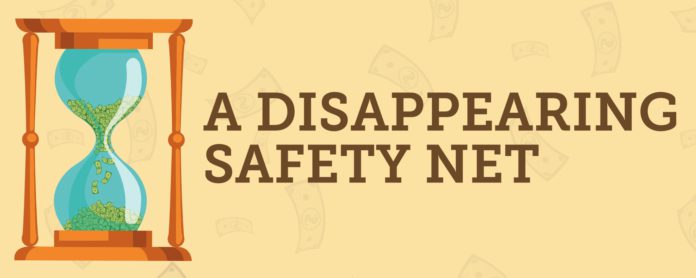
Last week, federal unemployment aid providing $600 weekly to supplement state unemployment benefits for laid-off workers expired, and for the past few weeks lawmakers have locked horns about how to replace it. Republicans have proposed a $200-per-week benefit until a new model can be adopted for federal and state benefits to replace up to 70% of laid-off workers’ wages.
A key argument for reducing the federal boost to unemployment aid is that people will not have an incentive to return to work if they receive as much or more in employment benefits as they did at their job. But that argument may not be based on much more than rhetoric deployed to support traditional arguments against expanding social safety nets.
A recent study by economists at Yale University did not find evidence the additional $600 benefit has decreased people’s motivation to find work. The study used data from timesheet and scheduling software company Homebase and found the boosted benefits overall did not appear to either encourage layoffs for businesses to cut costs or discourage people from returning to work.
Jennifer Greenfield, an associate professor at the University of Denver’s Graduate School of Social Work, said other studies over the years of unemployment benefits in the U.S. and other countries have found more generous unemployment benefits actually tend to increase people’s motivation to look for work.
Greenfield said that effect is probably a result of a mix of practical and psychological factors, such as increased ability to pay for childcare while job searching and the sense of self-actualization that comes from working.
“I think that we also tend to discount some of the psychological effects,” she said. “But we find that people actually do prefer to work, and it’s actually a fairly deeply ingrained value in the United States that people don’t like to just take handouts. … Typically when these things are modeled by economists, it doesn’t take into account those kinds of psychological factors that would create motivations outside of just the pure economic motivations.”
Brooke Colaizzi, a member at Sherman & Howard, said transitioning to a model of additional federal aid based on replacing a percentage of people’s lost wages would add an extra layer of logistics for states to administer unemployment benefits, because they would need to calculate the amount of federal unemployment funding a person qualifies for on top of state benefits to meet the wage replacement percentage.
“So my concern is whether they could get that integrated into their system in any kind of timely fashion. I know they would do the best that they could, but I could imagine there could be some fairly significant delays, because it’s going to be different for everybody,” she said.
Republican lawmakers have also advocated for employer liability protection for employees who ended up contracting COVID-19 as long as the employers take reasonable safety measures, such as following regional public health orders. It also raised the standard to gross negligence for proving a liability claim.
Colaizzi said protection from liability would be the most significant aspect of the next stimulus package for employers and would go a long way toward “calming their nerves” about trying to figure out how to balance employee safety with continuing operations.
“One side of the argument is going to be that [it’s] giving employers an incentive to cut corners because it’s going to be tougher for an employee to prove liability. The flip side of it is, though, we’re all learning how to do this for the first time and we’re making it up as we go along. And employers are having to implement procedures and standards that we’re learning from scratch in a lot of ways.”
Colaizzi said she hasn’t yet seen an upswell of negligence claims against businesses by people who have contracted COVID-19, likely because of businesses and workplaces having been shut down until recently. But as businesses start to reopen more fully, she said she would expect that to lead to an increase in claims.
She added liability protection also implicates addressing unemployment, because perceptions of how safe a workplace is to return to can affect businesses’ decisions about whether they feel secure reopening.
Greenfield said the characterization of unemployment benefits paying people not to work is misleading, because the extra federal aid is helping people meet their basic financial aid while the jobs bringing them back into the workforce just aren’t there.
“It’s very difficult to reach a threshold where you’re actually paying people too much and their productivity is going to decrease. We aren’t even coming close to that with things like $600 a week,” Greenfield said. “We’re really just at the point where we’re helping people to meet their basic needs and not be literally out on the street.”
Despite the social science about people’s motivation to work, she said the current dire economic circumstances make a bad time for such philosophical debates. “It seems like now is not the time to debate economic theory,” she said, adding it’s frustrating to hear quibbling over policy based on scattered anecdotes of people choosing not to return to work because they have received more in unemployment benefits than their previous wages. “Now is the time to make sure that people have their basic needs met so they can get as close to maintaining health as possible during a pandemic.”
—Julia Cardi

